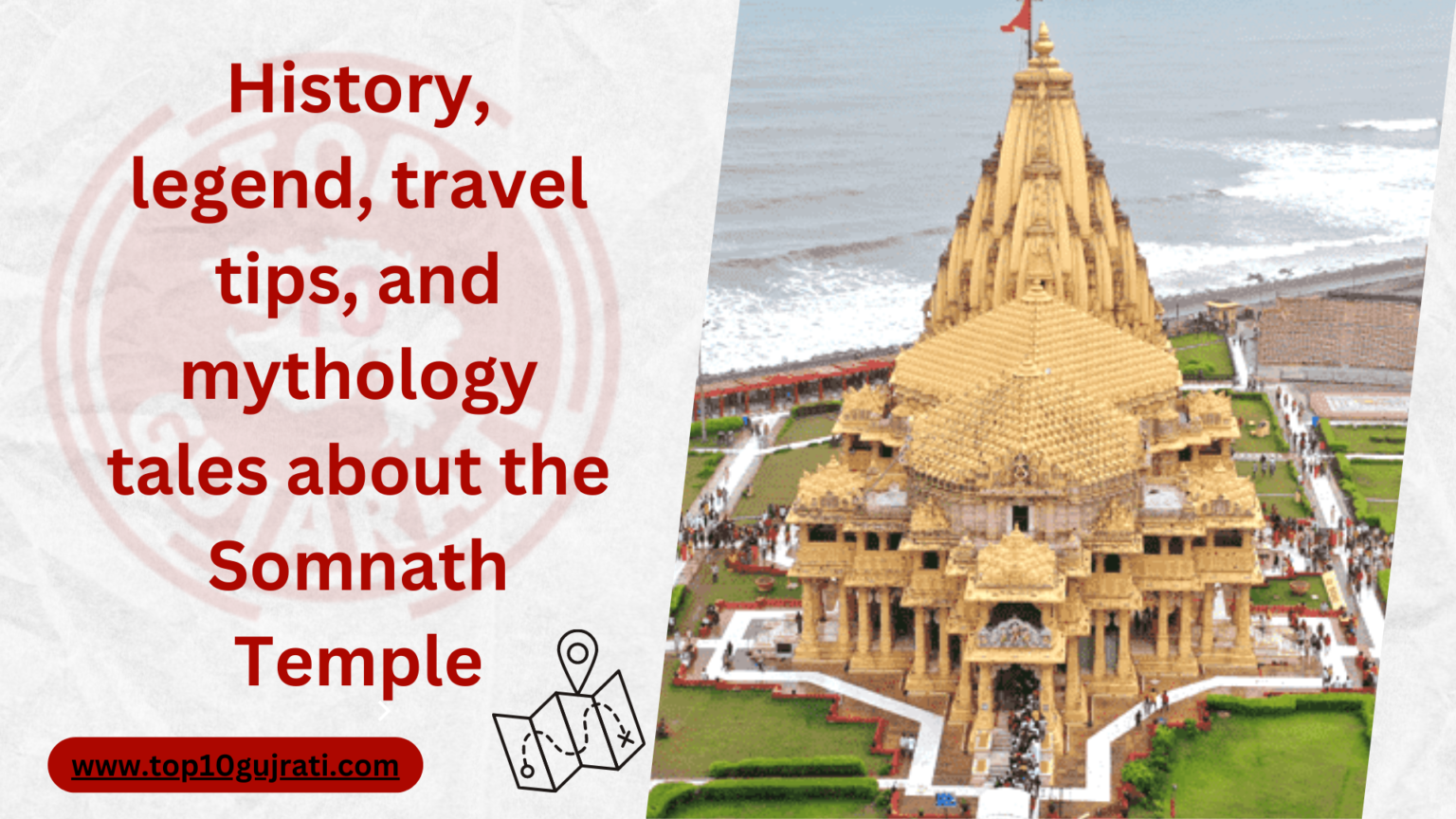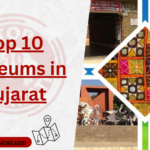The Somnath Temple, located in the state of Gujarat, India, is one of the oldest and most revered temples dedicat ed to Lord Shiva. Its history is steeped in legend and dates back several centuries.
According to ancient Hindu texts and folklore, the original Somnath Temple is believed to have been built by Lord Soma, the Moon God, himself, at the behest of Lord Brahma. It is said that the temple was made of gold and precious stones and was a grand spectacle. Over time, the temple faced destruction and was rebuilt multiple times.
Historical records suggest that the first documented reconstruction of the Somnath Temple took place in the 7th century CE by King Vallabhbhai of Saurashtra. The temple flourished as an important center of pilgrimage and attracted devotees from different parts of India and beyond.
However, the temple’s history also includes periods of turmoil and destruction. The most significant event in this regard occurred in 1026 CE when Mahmud of Ghazni, a Turkish invader, attacked and looted the temple, taking away its immense wealth. It is believed that the temple was plundered several times by different invaders over the centuries.
Despite the repeated destruction, the Somnath Temple always rose from the ashes and was rebuilt each time. One of the most notable reconstruction efforts was led by Raja Bhimdev Solanki of Gujarat in 1169 CE. This phase marked a significant revival of the temple’s grandeur and cultural importance.
The current structure of the Somnath Temple is the result of extensive renovations and reconstructions that took place in the 20th century. After India gained independence from British colonial rule in 1947, efforts were made to restore the temple to its former glory. The then Deputy Prime Minister of India, Sardar Vallabhbhai Patel, played a crucial role in mobilizing resources and support for the reconstruction.
The present-day Somnath Temple, completed in 1951, showcases a magnificent architectural style that blends traditional Hindu temple design with modern elements. It stands as a symbol of resilience, faith, and national pride for the people of India.
The temple continues to be an important pilgrimage site and attracts millions of devotees each year. It holds a prominent place in Hindu mythology and is revered as one of the twelve Jyotirlingas, which are believed to be the most sacred abodes of Lord Shiva. The Somnath Temple is not only a religious icon but also a historical and cultural treasure of India.
Somnath is a place located in the state of Gujarat, India. It is primarily known for its historical and religious significance due to the presence of the famous Somnath Temple.
The Somnath Temple is situated on the western coast of Gujarat, near the Arabian Sea. It is located in the Veraval district, approximately 6 kilometers from the town of Veraval. The temple stands on the shores of the Prabhas Patan, a scenic area known for its natural beauty and serene ambiance.
Apart from the Somnath Temple, the region around Somnath offers various attractions for visitors. Some notable places to visit in the vicinity of Somnath include:
1. Triveni Sangam: Located near the temple, Triveni Sangam is the confluence of three holy rivers, namely the Hiran, Kapila, and Saraswati. Taking a dip at this sacred spot is considered auspicious.
2. Junagadh: About 80 kilometers from Somnath, Junagadh is a historic city with many architectural marvels, including the Uparkot Fort, Mahabat Maqbara, and the Girnar Hills, known for their Jain and Hindu temples.
3. Porbandar: Situated approximately 130 kilometers from Somnath, Porbandar is the birthplace of Mahatma Gandhi, the father of the nation. The city has a museum dedicated to his life and teachings, known as the Kirti Mandir.
4. Gir National Park: Located around 50 kilometers from Somnath, Gir National Park is renowned as the last remaining habitat of the Asiatic lions. It offers wildlife enthusiasts an opportunity to spot these majestic creatures in their natural habitat.
5. Dwarka: While it is a bit further away, approximately 235 kilometers from Somnath, Dwarka holds immense religious significance as the ancient kingdom of Lord Krishna. The Dwarkadhish Temple and other holy sites at tract pilgrims from across the country.
If you are planning a trip to Somnath, here are some travel advice and tips to make your visit more enjoyable:
1. Best Time to Visit: The ideal time to visit Somnath is during the winter months from November to February when the weather is pleasant and suitable for sightseeing. Summers (March to June) can be scorching, while monsoons (July to September) bring heavy rainfall.
2. Getting There: The nearest airport to Somnath is Diu Airport, which is around 90 kilometers away. The nearest major railway station is Veraval Railway Station, just 6 kilometers from Somnath. Veraval is well-connected to various cities in India. You can also reach Somnath by road through state-run buses or private taxis.
3. Accommodation: Somnath offers a range of accommodation options, including hotels, guesthouses, and resorts. It is advisable to book your accommodation in advance, especially during peak tourist seasons and religious festivals, to ensure availability.
4. Dress Code: As Somnath Temple is a revered religious site, it is advisable to dress modestly. The shoulders and legs of both men and women should be covered. Before entering the temple grounds, it is traditional to take off your shoes.
5. Temple Timings: The Somnath Temple is open for darshan (visits) from early morning to late evening. The exact timings may vary, so it is recommended to check the temple’s official website or local sources for the current timings before your visit.
6. Local Customs: Respect local customs and traditions while visiting Somnath. Seek guidance from temple authorities or locals regarding rituals and procedures to follow inside the temple.
7. Nearby Attractions: Explore other attractions near Somnath, such as Triveni Sangam, Junagadh, Gir National Park, and Porbandar.
8. Safety and Security: Like any other travel destination, it is essential to take general safety precautions. Keep your belongings secure, avoid isolated areas at night, and be cautious of any unsolicited offers or scams.
9. Local Cuisine: Don’t miss the opportunity to savor the local Gujarati cuisine while in Somnath. Try traditional dishes like Dhokla, Thepla, Khandvi, and Gujarati Thali, which are popular in the region.
10. Cultural Sensitivity: Respect the local culture and traditions of Gujarat. Be mindful of your behavior and avoid activities that may be offensive or disrespectful to the local community.
Remember to check for any travel advisories or restrictions in place before your trip to ensure a smooth and hassle-free visit. Enjoy your time in Somnath and immerse yourself in the spiritual and historical ambiance of this sacred place.
How to reach Somnath Temple with a distance description, here are the various transportation options and their approximate distances:
1. By Air:
The nearest airport to Somnath is Diu Airport, located approximately 90 kilometers away. From Diu Airport, you can take a taxi or a bus to reach Somnath Temple, which is around 90 kilometers or 55 miles away.
2. By Train:
The nearest railway station to Somnath is Veraval Railway Station, located about 7 kilometers away. You can reach Veraval Railway Station by train from major cities in Gujarat or other parts of India. From Veraval Railway Station, the distance to Somnath Temple is approximately 6 kilometers or 4 miles.
3. By Road:
If you are traveling by road, here are some distances from major cities in Gujarat to Somnath Temple:
– From Ahmedabad: Approximately 410 kilometers or 255 miles (via NH47 and NH27)
– From Rajkot: Approximately 190 kilometers or 118 miles (via NH8B)
– From Dwarka: Approximately 230 kilometers or 143 miles (via NH51)



